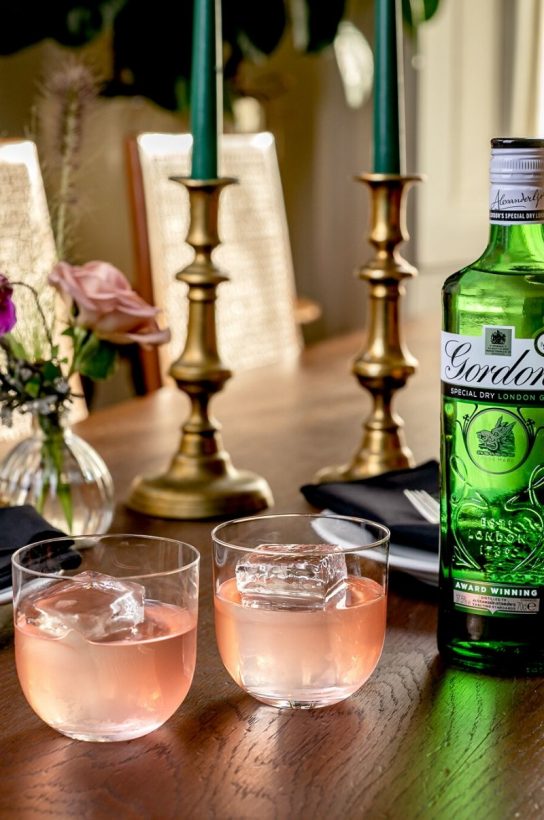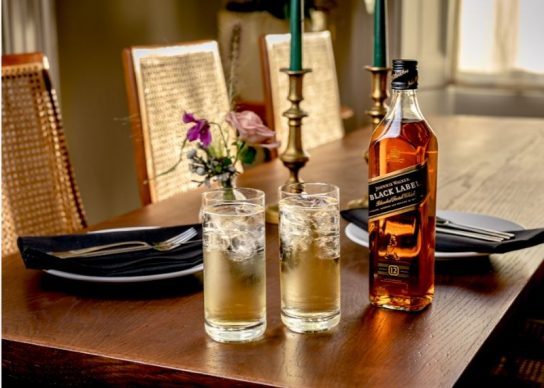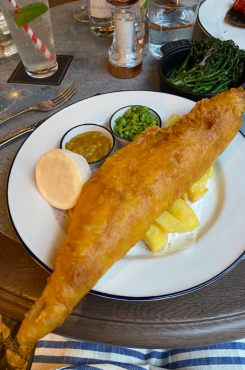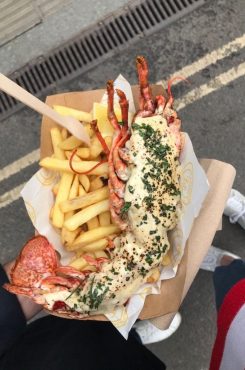Set the bar high
Published 3 December 2019

From the rise of the aperitif to superlative after dinner cocktails, here’s why bars in restaurants are soaring. By Chloe Scott-Moncrieff
Two decades ago, if we’d suggested well executed cocktails in UK restaurants were as important to business as the chef’s menu, many restaurateurs would have nodded politely before an eye roll and quick departure. These days, much has changed.
A new phenomenon is restaurateurs not only want a bar next to their kitchen but they want a damned fine one – a place where a panoply of pre and postprandial drinks are served to attract further custom.
Drinks expert Ryan Chetiyawardana, who runs the Mr Lyan bar family and the cocktail element of the restaurant CUB alongside acclaimed chef Douglas McMaster (he talks about his new restaurant venture in the latest edition of the CODE Quarterly), understands this movement like few others. “I don’t separate food from drink,” he explains. For customers, CUB is a bold experience where even the set menu is a melange of drinks and dishes. Charming icons of a cocktail glass or knife and fork indicate to the diner their next “course.”
Explaining why bars are so important to restaurant trade, Chetiyawardana says, “Previously, people might have a drink elsewhere before or after a meal but from a financial perspective, why wouldn’t you bring that spending into the restaurant?”
It’s a strong argument. But for Chetiyawardana there are other motivations too: The interplay between the kitchen and bar inspires creativity. For starters, it’s a radical way of exploring sustainability issues like food waste. “When you have a bar and a kitchen together, you’re using the ingredients in full, it’s easier to have crossover and share ideas. The chef uses different parts of the vegetable, herb or fruit to the bar and it makes the team more creative.” Inevitably, there’s a business case for these “green” cocktails. “You don’t waste as much, which makes financial sense and you end up creating really interesting drinks and dishes.”
Another hallmark of this new approach to drinking is in cocktail flavour profiles; savoury, herbal, bitter and sour are becoming as prevalent as sweet. At CUB, it’s rare to find anything sugar-laden or cloying. Instead, refreshing, thoughtful combinations like juniper, pine, watercress and pear or lacto-rhubarb with cognac and cacao husk reflect the savoury nature of the overall experience.
Chetiyawardana isn’t alone – restaurateurs across Britain are putting modern spins on aperitivo-digestivo time to open and close the meal experience.
A success story to him is Smoking Goat, the Thai grill in Shoreditch, where the team reflect the restaurant’s ideal through the aperitifs. In this laid back diner, you’ll find punters sipping on combos like gin, sloe and lemon & sparkling Riesling before the meal. “The cocktails are brilliant, aromatic and bright and they sow that seed, setting the scene for the diner.”
Over at Tayer + Elementary, class mixologist Monica Berg, who is renowned for pairing drinks with food (she ran Himkok in Oslo, No.19 on the World’s 50 Best Bars list), strums to a similar tune.
Berg, who headlined the cocktails at the YBFs awards in September celebrating grassroot food and drink talent, served up two flavour-driven aperitifs to open the ceremony. The cocktails, a Gordon’s Gimlet of Gordon’s London Dry gin, fino sherry, Peychaud’s bitter and palo santo and a Johnnie Walker Black Label Scotch highball with neroli, cedarwood and soda, whet appetites before chef Roberta Hall of Little Chartroom’s food, and demonstrated just how versatile spirits can be in the pre-meal space.

Of events like this, she explains, “Curation is key. You don’t need a lot of drinks on the menu but consistency is important.” It’s vital these potations focus on “fresh” flavours, and so using quality spirits is key. Gordon’s Gin and Johnnie Walker Black Label Scotch were well-suited to the aperitif adaptation for the event. Inventive, quality drinks don’t just add to the beginning of a meal, either, but can bring a new dimension to the after-dinner occasion. Creatively, The YBFs awards positioned the deliciously indulgent range of Baileys drinks, served chilled on ice, alongside more traditional after-dinner desserts. In restaurants, making use of spirits in this way helps to extend the overall meal, adding an extra enhancement for guests.
Unsurprisingly, back at Tayer the bar is the star of the show – it’s ingeniously capturing the growing solo diner market. “Having a bar means you can accommodate solo diners, which we get a lot of – more and more customers like to sit at the bar to eat.”
Guests come to enjoy the drinks list before and after grazing on superb dishes in a way that wouldn’t be possible in a more formal space. “The dishes and cocktails match, the pairings are more important than the individual elements.”
Clearly, small innovative venues – Berg cites fellow trailblazing bar-restaurant James Fowler’s Terroir on Southbourne Grove, Bournemouth as one to watch – are all over this phenomenon. But what about Michelin establishments?
One such destination predictably spearheading is 27th best world restaurant, The Clove Club in Shoreditch. Mixologist Rob Simpson, who heads up the imbibing area, defines the impact a bar has on the establishment. “You’re bringing another group of professionals into the space. It’s like introducing a new section to your kitchen, it’s the liquid section of your orchestra.”
Simpson’s experience is a bar offers a democratic option to customers. “For a customer to sit for dinner, they’re making a big commitment for £200 a head. If you have a good bar, you’re offering a low entry commitment. This way, it’s less pressure.” Increasingly, customers just want to relax and hop around a menu, sampling quality drinks and small plates so Simpson serves seasonal cocktails with a focus on “invigorating the palate”. There’s a salty savoury daiquiri with dry vermouth for example. He explains, “Acid plus bitter plus effervescence and salt gets the palate going before eating.”
Simpson concludes, “It’s a different revenue stream. You can add new products, teas, kombuchas, ferments.” What’s more, decent drinks increase likelihood of return. “If the service and quality is great, people can come in, have a drink, get a taster, then come back for the tasting menu in the restaurant.”
To discover more industry insights, subscribe to the CODE Quarterly here




